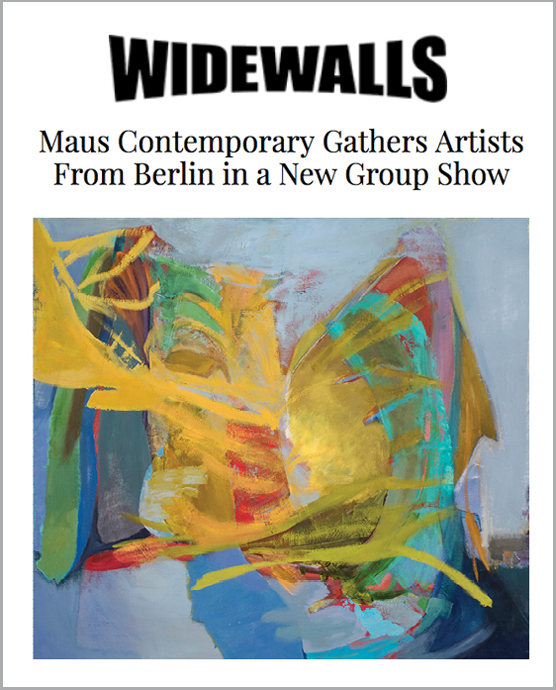Maus Contemporary
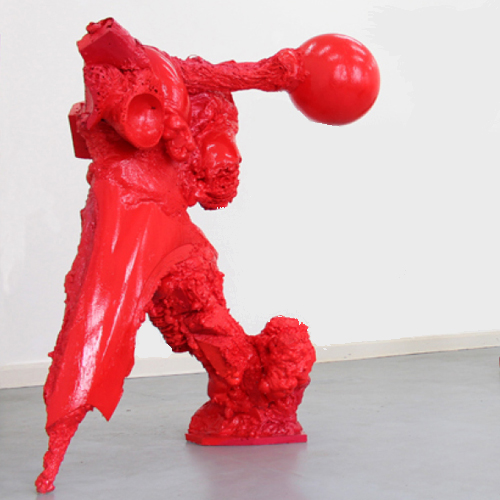 exhibition "Sleeper in Metropolis" exhibition "Sleeper in Metropolis" |
Sleeper in Metropolis Acht Künstler aus Berlin
Felix Becker Franziska Beilfuss Martin Böttger Lisa Braun Fabian Hub Christof Kraus Yannick Riemer Greta Wildhage
January 17 - March 6, 2020 opening reception
|
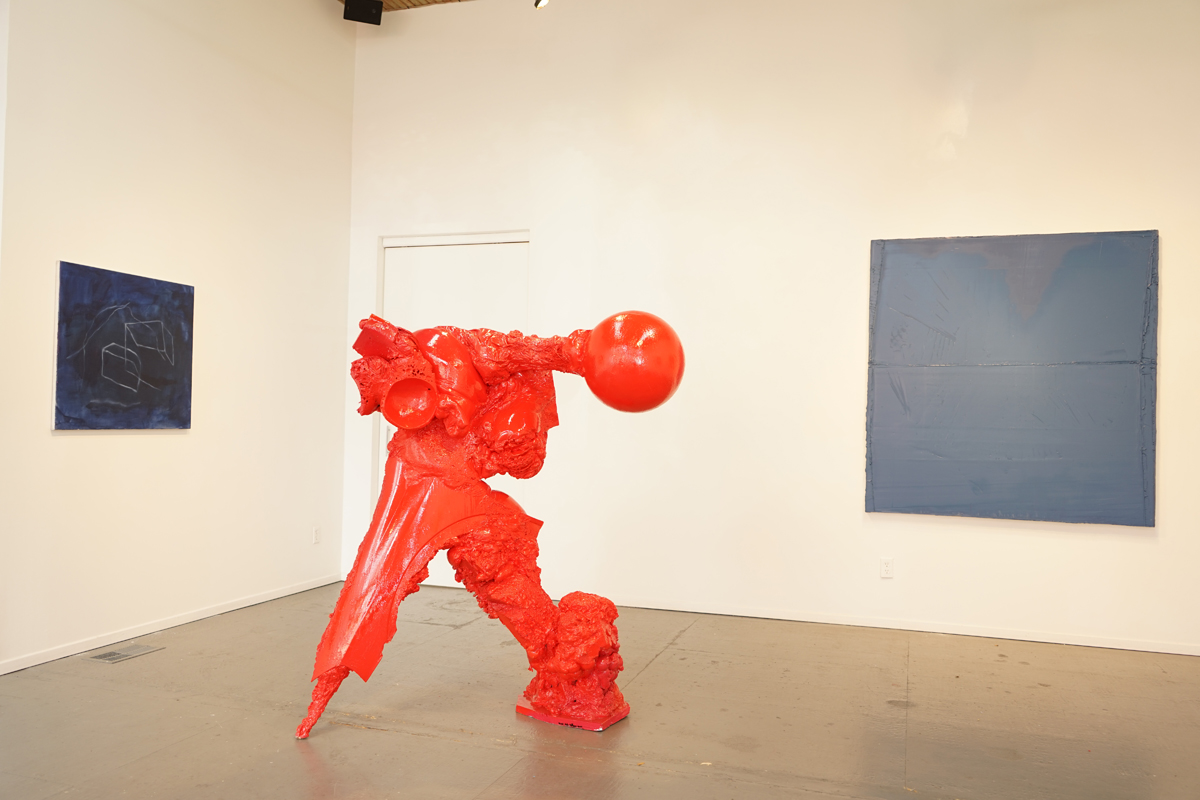 Sleeper in Metropolis - installation view
Sleeper in Metropolis - installation view
Felix Becker
Felix Becker (born 1987 in Frankfurt-am-Main, lives and works in Berlin) studied Art Education, Philosophy, Politics, and Mediascience at the Goethe Universität in Frankfurt from 2008 to 2014, and was the 2011 Recipient of the Scholarship Studienstiftung des deutschen Volkes, graduating 2014 in Art Education and Philosophy at the Goethe Universität. Since 2016 he studies Fine Art at the Universität der Künste in Berlin. First under Swiss painter Valérie Favre, now with German artist Thomas Zipp. Becker's work has been shown in the United States as well as in Europe and is included in numerous private collections in the US, Switzerland, and Germany.
The physical process of image discovery is a central part of Becker’s practice. His canvases carry a heavy excess of color, from which he works out the image. The classic materials of the pure linen fabric and the oil paint, as well as the chosen amount of paint, are an overemphasis of the subject and an overemphasis of the figurative, which is the color itself, yet we look in vain for clearly defined figures in Becker's paintings. Like everything else that suggests itself, they seem to be hiding in the paint and can only be located by their three-dimensional shape. Becker is interested in those colors only defined in intermediate areas: violet blue, grey pink, black blue, red orange or mint white. The initial choice and the mixing of the color, as well as the size of the image carrier itself are, in a sense, the only premises of the image creation. Once finished, it may evoke specific imaginations, but Becker intends this only to a limited extent. Instead, he seeks the participation of the material and its own decision-making. Also important for his painting process are his relief-like monochromatic layers of paint, which always cover the entire canvas and hence also denying us access to whatever is to be found underneath. We see a grown image that has lived through several stages, of which only few structures remain clearly visible or noticeable - an image that we cannot see or never fully grasp.
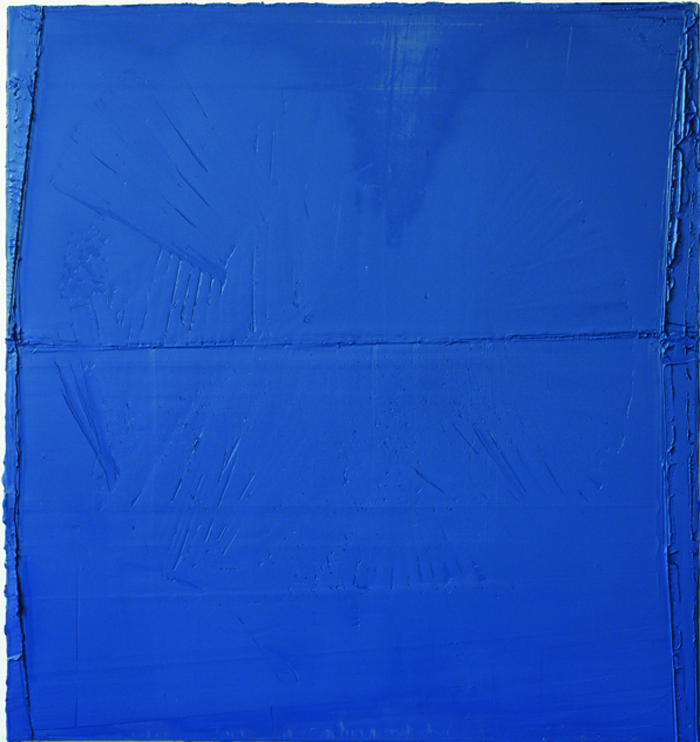 Felix Becker ohne Titel (H)
Felix Becker ohne Titel (H)
Felix Becker
ohne Titel (H)
2019
oil on paper on canvas
63 by 59 in. (160 by 150 cm)
private US collection
Franziska Beilfuss
Franziska Beilfuss (born 1986 in Berlin, lives and works in Berlin) studied 2006-07 Fine Arts-Foundation at Central Saint Martins, University Of The Arts in London before working in performance produktion as assitant to Dimiter Gotscheff at The Volksbühne and Andreas Kriegenburg at the Deutsches Theater from 2008 to 2010, followed by her studies of Art History and Theater Science at the Freie Universität Berlin, and subsequently Fine Art at the Universität der Künste in Berlin under Professor Mark Lammert from 2012 to 2017, and obtained her MFA in 2018.
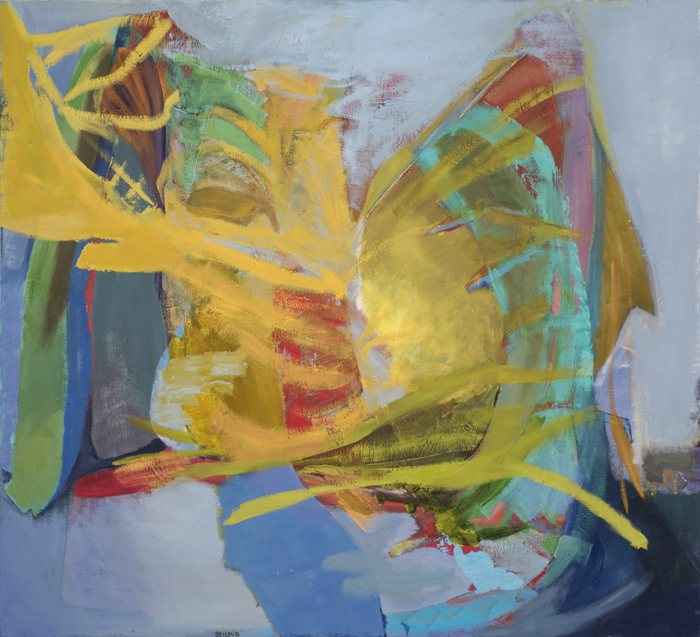 Franziska Beilfuß Der kleine Schwärmer
Franziska Beilfuß Der kleine Schwärmer
Franziska Beilfuß
Der kleine Schwärmer
2019
oil on canvas
39.4 by 43.3 in. (100 by 110 cm)
private US collection
Martin Böttger
Martin Böttger (born 1982 in Meissen, lives and works in Berlin) studied visual communication and new media at the School of Arts and Design Kassel from 2004 to 2009 and graduated the master class of Joel Baumann in 2010, subsequently working as scientific-artistic assistant for new media at the School of Arts and Design Kassel from 2010 to 2014, while doing his post-doctoral research.
Böttger‘s work - sculpture, installation work, and audio-visual performances - deals with human evolution and reflects an abstract investigation of the body and its optimization. In the age of information society, neurosciences and biotechnology, physicality becomes the subject of the specialization of human coexistence. Böttger understands his work as „hybrid, further development, and a manipulation of existence“.
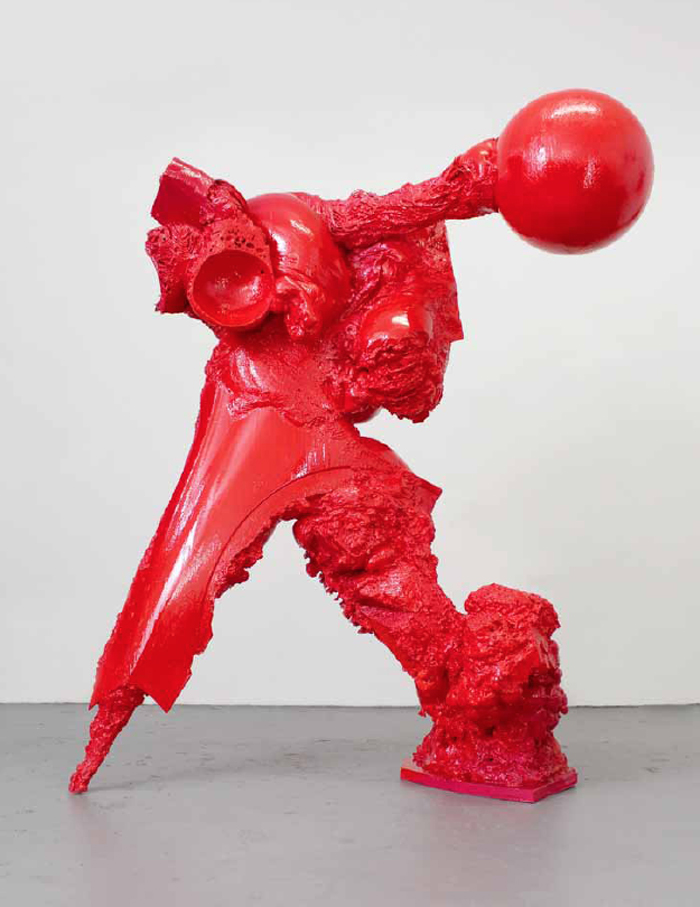 Martin Böttger NUK (Heroes)
Martin Böttger NUK (Heroes)
Martin Böttger
NUK (Heroes)
2017
Polyurethane, polystyrene, epoxy, spray paint, acrylic, metal
69.3 by 55.1 by 31.5 in. (176 by 140 by 80 cm)
private US collection
Lisa Braun
Lisa Braun (born 1988 in Berlin, lives and works in Berlin) studies visual arts at Universität der Künste Berlin with Professor Thomas Zipp since 2014.
In her material-based practice, she deals with metaphorical and biomorphic forms. Her focus is on dealing with the physicality of forms and their effects on the spectator by using materials such as latex and clay in order to create dynamic impressions of mass and surface, resulting in a flexible object possibly appearing to be hard and inflexible. Gestures become snapshots seemingly freezing the material’s transformative process at an arbitrary moment.
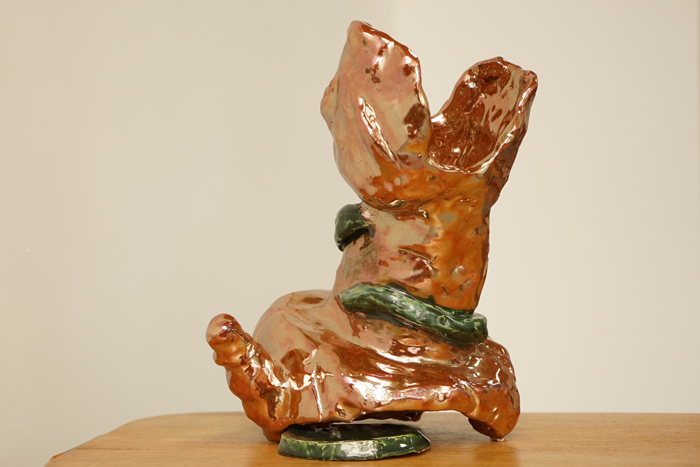 Lisa Braun ohne Titel Lisa Braun ohne Titel |
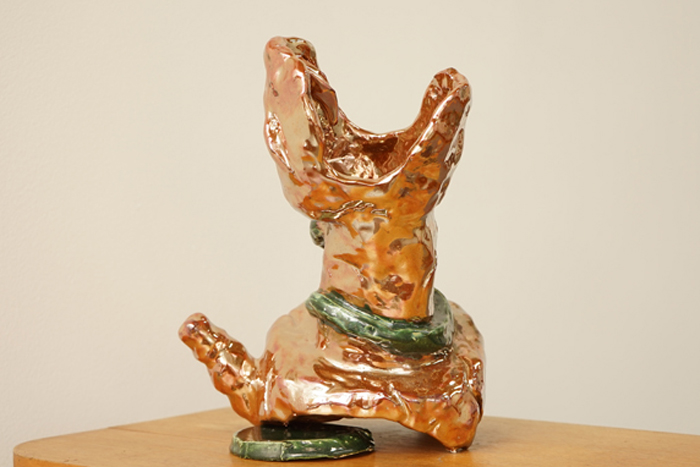 Lisa Braun ohne Titel Lisa Braun ohne Titel |
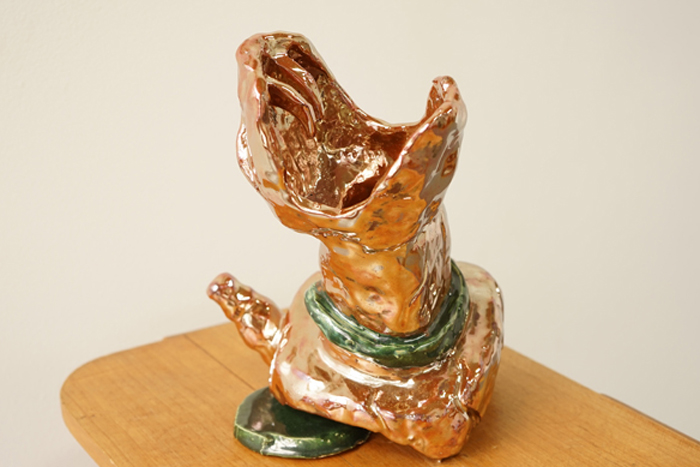 Lisa Braun ohne Titel Lisa Braun ohne Titel |
Lisa Braun
ohne Titel
2019
fired clay
11.2 by 8.3 by 9.4 in. (28,5 by 21 by 24 cm)
private US collection
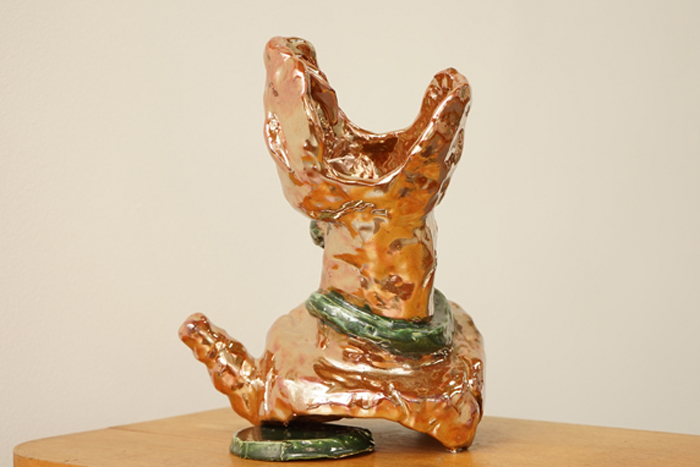 Lisa Braun ohne Titel
Lisa Braun ohne Titel
Fabian Hub
Fabian Hub (1988 born in Mainz, lives and works in Berlin) began his studies in visual arts at Akademie für bildende Künste Mainz with Professor Friedemann Hahn. Since 2015, he studies at Universität der Künste Berlin with Professor Thomas Zipp. In 2017, he took part in an artist-in-residence program in Finland (Nelimarkka Museo, Alajärvi).
Hub works mainly with oil on canvas. Everyday activities, personal and trivial issues, and their location within the art of painting set the content framework of his work. In an interplay between the direct implementation of thoughts, subjects, links, compositional decisions and complexity reductions, a dialogue is created, that becomes visible in many layers and structures. Even without a concrete representation of space, a sense of light and depth is evoked. Within this “room” there are traces of the whole process, such as text fragment compositions, that can be gesture, placeholder, comment, quote or purely formal element.
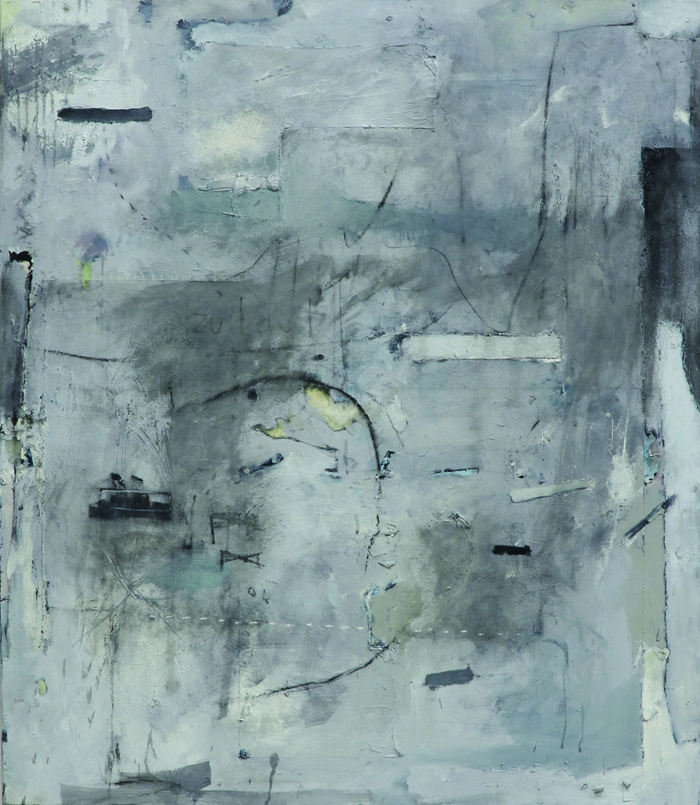 Fabian Hub ohne Titel
Fabian Hub ohne Titel
Fabian Hub
ohne Titel
2018
oil on canvas
45.7 by 39.4 in. (116 by 100 cm)
Christof Kraus
Christof Kraus (born 1978 in Erlangen, lives and works in Berlin) studied Fine Art at the Bauhaus Universität Weimar from 2009 to 2012 before joining London's Chelsea School of Art for one semester in 2013, and subsequently obtaining his MFA in 2016 under professor Mark Lammert at the Universität der Künste in Berlin with a stipend from the Studienstiftung Vusanuswerk. Kraus is the 2016 recipient of the coveted Regina Pistor Preis.
Kraus pursues unobstructed inner questions as well as external impulses, following a formalistic instinct to play, in which he develops his own pictorial language. Through his paintings - created in unconditional honesty, visible through the work’s ambivalence - the artist tries to formulate personal laws that explore the balance between protagonist and antagonist, longing and disillusionment, and ultimately reality and utopia. His paintings are as if one were looking into a basin filled with water, in which various liquids constantly repel each other, aspire to union and are ultimately always in motion in this way. Like life itself, his works characterize facets and poles. Forms repulse, are complementary and at the same time permeable to each other.
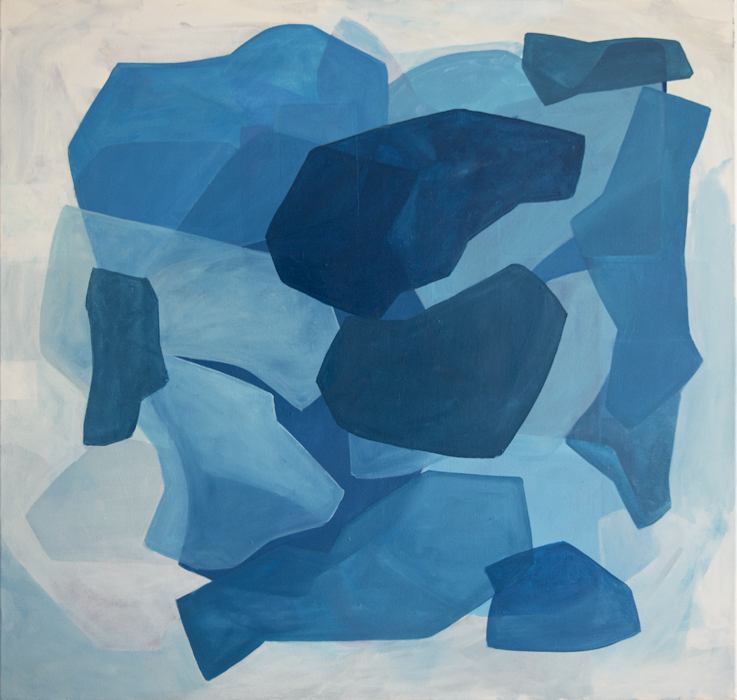 Christof Kraus ohne Titel (Layers)
Christof Kraus ohne Titel (Layers)
Christof Kraus
ohne Titel (Layers)
2017
oil on canvas
41.3 by 43.3 in. (105 by 110 cm)
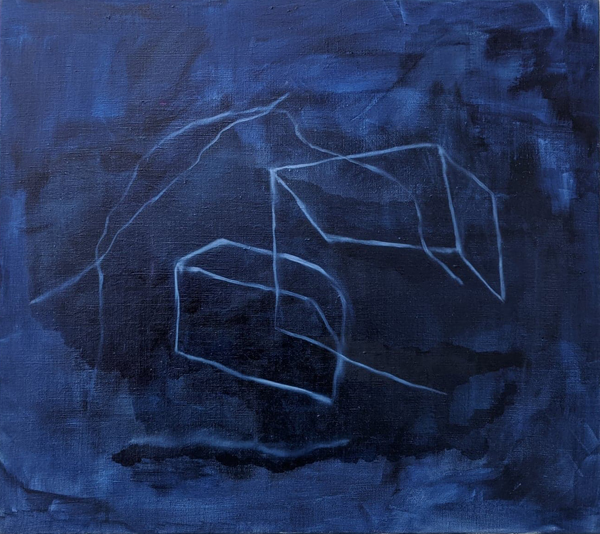 Christof Kraus Ghost
Christof Kraus Ghost
Christof Kraus
Ghost
2018
oil on canvas
31.5 by 35.4 in. (80 by 90 cm)
private US collection
Yannick Riemer
Yannick Riemer (1990 born in Niedersachsen, lives and work in Berlin). Following his training as a graphic designer in Hamburg (2010-2013), he studies visual arts at Universität der Künste Berlin with Professor Thomas Zipp. During his studies, he took part in artist-in-residence programs in Scotland (Crinan, Argyll), Finland (Nelimarkka Museo, Alajäryi), and Afrika (Opendorf Afrika, Ouagadougou, Burkino Faso).
In his drawings, screen printings and paintings, Yannick Riemer deals with issues like readability, signs and symbols, such as the development of a cryptic language. The focus of language development is on signs and symbols. Icons, cave paintings, runes, logos, “magical” signs, technical drawings, houses, jewellery, flags, uniforms, structures, etc. – everything that passes a first intuitive evaluation is recorded. A great number of sketches form kind of an encyclopaedia, where the different signs merge over and over again, are distorted and newly developed, based on their sign language, and then serve as a basis for artistic work. Its own “logic” becomes increasingly independent and is, after finishing the work, hardly analyzable, even for the author.
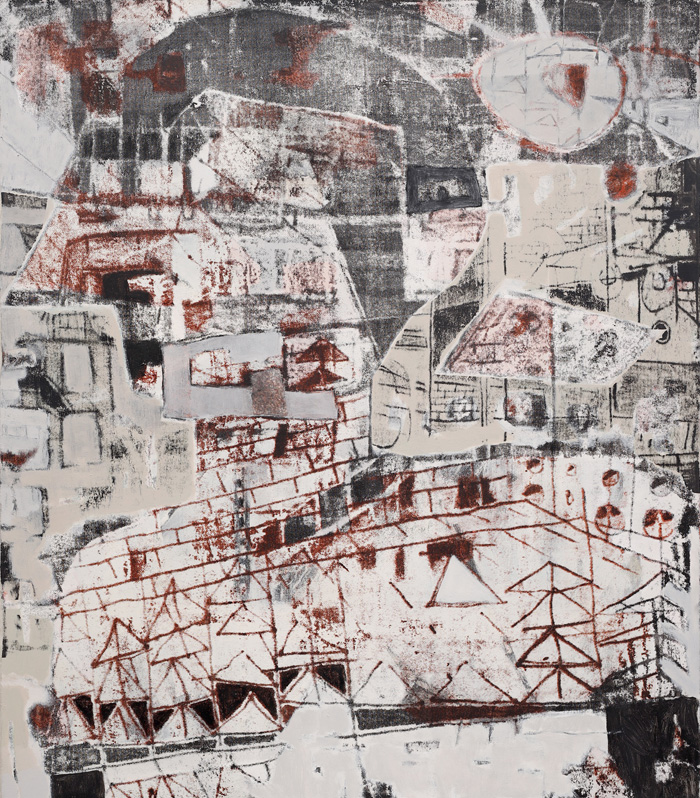 Yannick Riemer Opernhaus Afrika
Yannick Riemer Opernhaus Afrika
Yannick Riemer
Opernhaus Afrika
2019
oil, graphite, and silkscreen on canvas
47.25 by 41.3 in. (120 by 105 cm)
Greta Wildhage
Greta Wildhage (1991 born in Hannover, lives and works in Berlin). Following her two years-studies in architecture in Potsdam, she studies visual arts for the teaching profession at Universität der Künste Berlin with Professor Thomas Zipp since 2016.
Her artistic focus is on drawing and painting. Her work is not based on a restricted number of themes or autobiographic questions but develops an emotional world of pictures that opens up to the observer directly by a spontaneous and expressive working method. Atmospheres are captured away from concrete, real incidents, persons and places and leave the interpretation open, such as the formal composition itself.
 Greta Wildhage ohne Titel
Greta Wildhage ohne Titel
Greta Wildhage
ohne Titel
2017
oil on canvas
49.2 by 43.3 in. (125 by 110 cm)
private US collection
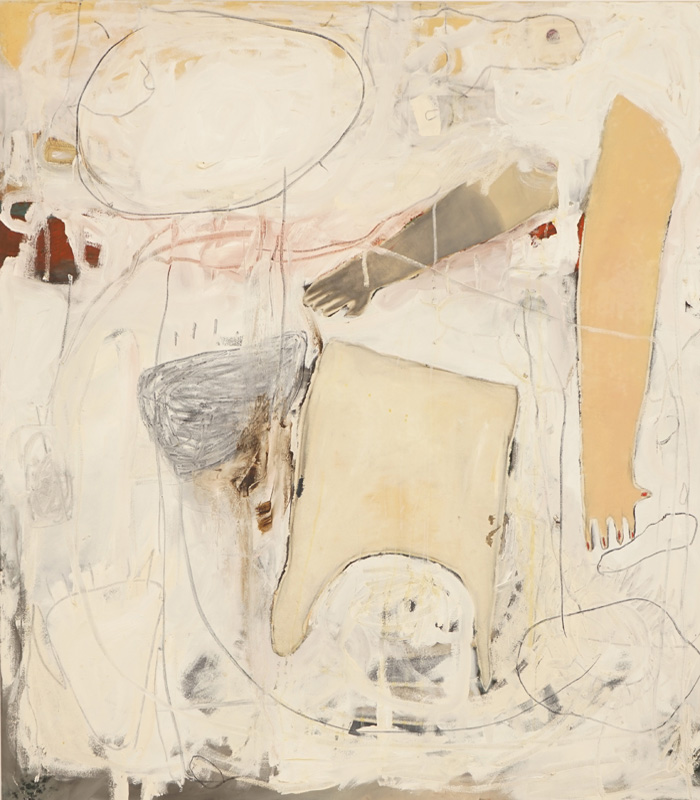 Greta Wildhage ohne Titel
Greta Wildhage ohne Titel
Greta Wildhage
ohne Titel
2017
oil on canvas
49.2 by 43.3 in. (125 by 110 cm)
private US collection
